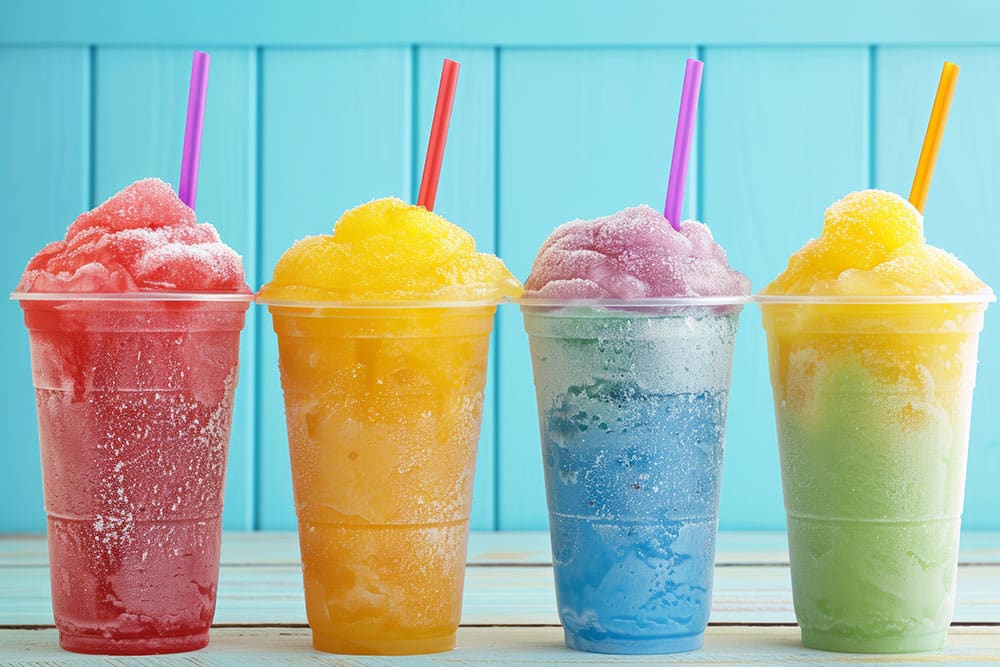What is glycerol and is it safe to consume?


Glycerol is an ingredient that is added to some food and drink, to keep products moist, preserve them, to change their texture or to sweeten them. Glycerin (or glycerine) is a very closely related ingredient.
It is also widely used in pharmaceuticals. For instance, it can be used in cough syrups and topical treatments including wound and burn creams.
Following a number of cases of glycerol intoxication in children, the FSA have issued guidelines to food manufacturers and retailers regarding levels in food and drink and how to serve specific products. The purpose of these guidelines is to help retailers and parents understand the risk to children from drinking slushies.
Because it is a sweetener and moistener, many processed foods contain small quantities of glycerol. Check your packet of tortilla wraps, chewing gum, cake icing or cereal bars. Glycerol usually appears towards the bottom of the ingredients list, showing that that product contains a small amount.
The FSA has released guidelines that relate specifically to slushy drinks. This is because of the levels of glycerol in some of these products and the way they are sometimes consumed. In some slushie drinks, it creates the slushy texture and sweetens, so can appear in relatively high levels compared to other foods and drinks. It is sometimes sold as a ‘bottomless’ drink, particularly in family orientated venues, leading to high levels of consumption over short time periods.
Glycerol intoxication can happen in children aged about ten and under, causing headaches, sickness, and in extreme cases, shock, hypoglycaemia and loss of consciousness. This is because their smaller bodies cannot break glycerol down as efficiently as an adult or older child.
Because some slushy drinks contain particularly high levels of glycerol, the FSA recommends that children under 10 only consume limited amounts (one drink per day) and retailers do not offer free refills.
Regarding children and babies under 4, the FSA say,
“The FSA’s risk assessment considered a worst-case exposure scenario in which a child consumed a 350 ml slush drink containing the highest level of glycerol used (50,000 mg/L) and compared this to a threshold above which adverse effects could occur. Children aged 4 or below would exceed this threshold."
Their recommendations are to avoid slushy drinks for this age group.
The FSA have made four recommendations to food businesses regarding slushy drinks:
Follow this link for FSA guidelines for businesses. Guidelines on the use of glycerol may change accordingly if future FSA investigations find significantly reduced levels.
As well as the guidelines issued to food businesses, the FSA have updated their Food Additives page for consumers. It now includes specific advice regarding glycerol:
“Slush ice drinks can contain the ingredient glycerol as a substitute for sugar, at a level required to create the ‘slush’ effect. At this level, we recommend that children aged four years and under should not consume these drinks.
This is due to their potential to cause side-effects such as headaches and sickness, particularly when consumed in excess.”
Updated March 2025: Following the hospitalisation of 21 children after drinking slushies, researchers called for public health advice to be revised. Having examined cases occurring between 2018 and 2024, academics at University College Dublin highlighted glycerol intoxication in children of seven years old. Given the variable body composition of children, they suggest that guidelines for consumption should be based on weight rather than age. Alternatively, they recommend a higher age restriction.
We will update this post when further information emerges.
The Safer Food Group offer food safety training for food businesses in the UK. As food safety experts, we inform customers of the latest industry news and guidance, and implications for their operations. For more information about The Safer Food Group training, please visit www.thesaferfoodgroup.com
Join 950,000+ learners
Explore our award winning online video based training
The Safer Food Group
Unit 2, Integrity House,
Lower Lumsdale, Matlock
DE4 5EX
Back
to top
© The Safer Food Group 2025 | Privacy policy